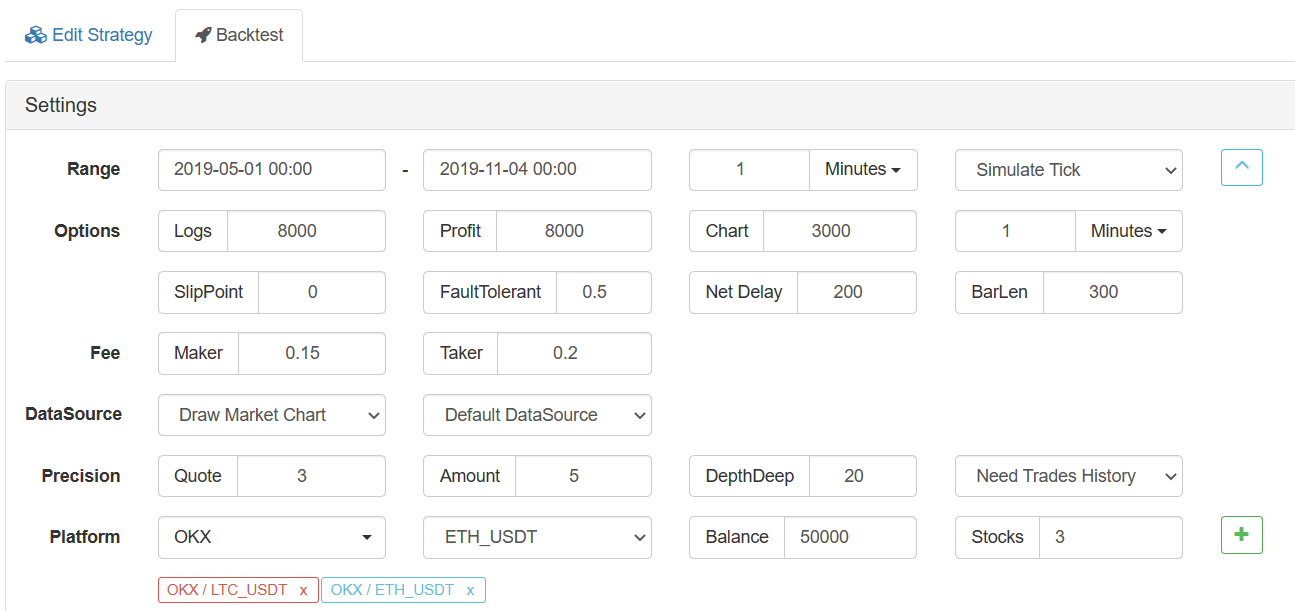Cross-currency hedging strategies in quantitative trading of blockchain assets
 0
0
 764
764

Cross-currency hedging strategies in quantitative trading of blockchain assets
In hedging strategies, there are various types of hedging: cross-market hedging, cross-period hedging, etc. Today we will talk about cross-currrency hedging, which is precisely the cross-currency hedging strategy in quantitative trading of blockchain assets. Generally, the subject matter of a hedging transaction is the same, while cross-currency hedging involves buying and selling different subject matter. When hedging the same variety, we can use the price difference as the buying and selling price in the hedging transaction. For the simplest cross-market hedging of the same variety, the price difference fluctuates repeatedly within a certain range. The price difference cannot be used as the buying and selling price for cross-currency hedging, because the price difference of different currencies is not very intuitive to observe, and the price ratio is usually used as the buying and selling price.
For example: Trading pair A: LTC_USDT Trading pair B: ETH_USDT
Distribute the opening positions according to the price ratio value of Price of Trading pair A/Price of Trading pair B. The larger the proportion is, the more we will sell A and buy B. If the proportion decreases, buy A and sell B. The equivalent USDT amount of each hedging is actually a strategy for grid trading based on the relative price of LTC/ETH. The strategy idea is not complicated. However, it should be noted that this kind of hedging portfolio actually uses ETH as the anchor price currency to price LTC. The anchored price is likely to go out of the unilateral trend. Although most of the time it may be a volatile trend, this risk needs to be considered and noted.
It is easy to write a strategy prototype by using the FMZ Quant Trading platform:
When the strategy code runs, it needs to reference  and
and  “Plot library”: https://www.fmz.com/strategy/27293
“Digital currency spot trading library”: This comes with the template bar when each user creates a new strategy.
“Plot library”: https://www.fmz.com/strategy/27293
“Digital currency spot trading library”: This comes with the template bar when each user creates a new strategy.
/*backtest
start: 2019-05-01 00:00:00
end: 2019-11-04 00:00:00
period: 1m
exchanges: [{"eid":"OKEX","currency":"LTC_USDT","balance":100000,"stocks":30},{"eid":"OKEX","currency":"ETH_USDT","balance":100000,"stocks":30}]
*/
/*
A exchanges[0] : EOS_USDT
B exchanges[1] : ETH_USDT
*/
var Interval = 500
// parameters
var numPoint = 100 // Number of nodes
var distance = 0.08 // Proportional distance
var amountPoint = 100 // Node amount in USDT
var arrHedgeList = []
function main () {
var isFirst = true
while(true) {
var rA = exchanges[0].Go("GetTicker")
var rB = exchanges[1].Go("GetTicker")
var tickerA = rA.wait()
var tickerB = rB.wait()
if (tickerA && tickerB) {
var priceRatioSell = tickerB.Buy / tickerA.Sell // B sell , A buy
var priceRatioBuy = tickerB.Sell / tickerA.Buy // B buy , A sell
if (isFirst) {
for (var i = 0 ; i < numPoint ; i++) {
var point = {
priceRatio : priceRatioSell + (i + 1) * distance,
coverRatio : priceRatioSell + i * distance,
amount : (0.08 * i + 1) * amountPoint,
isHold : false,
}
arrHedgeList.push(point)
}
isFirst = false
}
for (var j = 0 ; j < arrHedgeList.length; j++) {
if (priceRatioSell > arrHedgeList[j].priceRatio && arrHedgeList[j].isHold == false) {
// B sell , A buy
Log("Hedging, price ratio", priceRatioSell, "#FF0000")
$.Buy(exchanges[0], arrHedgeList[j].amount / tickerA.Sell)
$.Sell(exchanges[1], arrHedgeList[j].amount / tickerB.Buy)
arrHedgeList[j].isHold = true
LogStatus(_D(), exchanges[0].GetAccount(), "\n", exchanges[1].GetAccount())
$.PlotLine("ratio", (priceRatioSell + priceRatioBuy) / 2)
break
}
if (priceRatioBuy < arrHedgeList[j].coverRatio && arrHedgeList[j].isHold == true) {
// B buy , A sell
Log("hedge, price ratio", priceRatioBuy, "#32CD32")
$.Sell(exchanges[0], arrHedgeList[j].amount / tickerA.Buy)
$.Buy(exchanges[1], arrHedgeList[j].amount / tickerB.Sell)
arrHedgeList[j].isHold = false
LogStatus(_D(), exchanges[0].GetAccount(), "\n", exchanges[1].GetAccount())
$.PlotLine("ratio", (priceRatioSell + priceRatioBuy) / 2)
break
}
}
}
Sleep(Interval)
}
}
Through backtesting, we can initially verify the strategy ideas
Use the default backtesting settings:


It can be seen that only a few dozen lines of code were used to construct a strategy of your own ideas. It is very easy to implement a prototype of ideas on the FMZ Quant Trading platform. According to the above figure, this price proportion fluctuates most of the time, but there will be a certain trend. The optimization direction can be position control during hedging or adding a certain trend identification. In terms of position control, you can increase the hedging amount of each hedging node. For example, in the code:
if (isFirst) {
for (var i = 0 ; i < numPoint ; i++) {
var point = {
priceRatio : priceRatioSell + (i + 1) * distance,
coverRatio : priceRatioSell + i * distance,
amount : (0.08 * i + 1) * amountPoint, // 8% of amountPoint per increment
isHold : false,
}
arrHedgeList.push(point)
}
isFirst = false
}
In this way, the relatively heavy positions can be concentrated in the position with a high price proportion, so as to avoid large positions occupied when the price proportion is low. Of course, such cross-currency hedging is very risky. If the price of one currency continues to rise relative to the price of another currency, floating losses will occur. Therefore, cross-currency hedging requires a stronger correlation between the two currencies.
This strategy is only an initial DEMO, which can be further improved and optimized.
- Implement a Dual Thrust Digital Currency Quantitative Trading Strategy in Python
- The best way to install and upgrade for Linux docker
- Achieving long-short positions balanced equity strategies with an orderly alignment
- Time Series Data Analysis and Tick Data Backtesting
- Quantitative Analysis of Digital Currency Market
- Pair trading based on data-driven technology
- Application of Machine Learning Technology in Trading
- Use the research environment to analyze the details of triangular hedging and the impact of handling fees on hedgeable price difference
- Reform Deribit futures API to adapt to quantitative trading of options
- Better tools make good work -- learn to use the research environment to analyze trading principles
- Acquire digital currency strategy guide of FMex on FMZ Quant
- Teach you to write strategies -- transplant a MyLanguage strategy (Advanced)
- Teach you to write strategies -- transplant a MyLanguage strategy
- Teach you to add multi-chart support to the strategy
- Teach you to write a K-line synthesis function in the Python version
- Analysis of Donchian Channel Strategy in the Research Environment
- 当FMZ遇到ChatGPT,记一次使用AI来辅助学习量化交易的尝试
- Off the shelf quantitative trading tool for digital currency options
- Simple grid strategy in Python version
- Linear pending order flow strategy developed based on data playback function